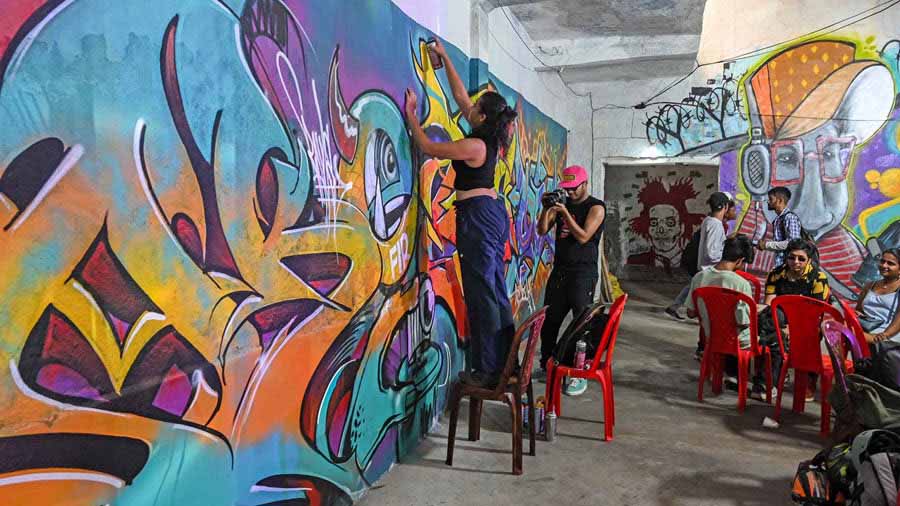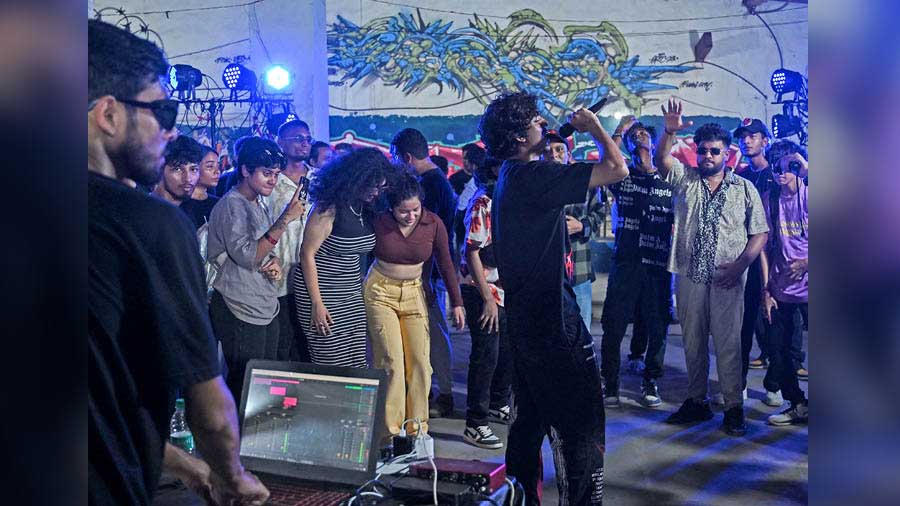On September 9 and 10, 50, South Tangra Road echoed with the beats of hip-hop. A tightly-knit community, this two-day event united graffiti artists, DJs and dancers in a celebration of urban creativity that pushed artistic boundaries. It served as a platform for self-expression, addressing social and political concerns while honouring urban culture, identity and creativity.
Hip-hop, born from the gritty streets of the Bronx in the 1970s, has since grown into a global cultural phenomenon. It’s a musical and artistic movement deeply rooted in the expression of urban life, a reflection of the streets and the stories that come from them. From its humble beginnings, hip-hop has evolved into a genre speaking the universal language of rhyme and rhythm.
Hip-hop and its elements
To understand hip-hop’s significance in the modern music landscape, one needs look no further than its global influence. Artists like KRS-One from the Bronx, Tupac Shakur from the West Coast, and Eminem from Detroit have elevated hip-hop to a worldwide stage. Their lyrics, often poetic and raw, are the pulse of hip-hop's storytelling tradition, addressing issues of social justice, identity, and urban struggles.
At its core, hip-hop comprises distinct elements – such as graffiti art and breakdancing (b-boying) – each a pillar in the culture's foundation. During the two-day hip-hop extravaganza, these elements breathed life into the event's beating heart.

A graffiti artist at work
In the world of hip-hop, graffiti, more than just street art, becomes a language of defiance and rebellion. At the event, graffiti artists transformed insipid concrete walls into vivid canvases, crafting colourful and intricate murals that implicitly told stories of urban life. Tattoos and piercings adorned participants, further amplifying the culture's ethos of self-expression. Each tattoo and piercing, like a lyric, became a part of the narrative, a declaration of identity.
A disc jockey spins at Flowcity
Hip-hop’s soul resides in its beats and rhymes. Music becomes the medium through which stories are told, and at the event, this power was on full display. Rappers took centre stage, their lyrical prowess weaving tales of struggle, hope, and resilience. DJs on their turntables supplied the beats, while beatboxing, a vocal art form, added a layer of raw energy, mimicking drum machines with precision. The music was a layered performance echoing hip-hop's essence.
Breakdancing, also known as b-boying, is a testament to hip-hop’s boundless energy and creativity. B-boys and b-girls defied gravity with flips, spins, and intricate footwork. Their movements, like a choreographed freestyle, embodied the culture’s spirit of physical expression and freedom. The dance battles that ensued were not competitions; they were conversations, dialogues of movement that spoke the language of hip-hop.
The event embodied the transformative force of hip-hop, bridging gaps and uniting diverse communities. What made it stand out was the absence of a traditional audience; here, almost everyone was a participant.
More graffiti artists at work
This peppy spectacle was brought to life through the collaborative efforts of Braave Entertainment director Nurul Islam, along with curator Andre Tully, Kula, and Flowcity. Their shared mission is to inspire writers and artists to embrace their creative potential.
“Collaboration is the driving force behind initiatives like this. Our mission is to inspire writers to unleash their creativity. Our vision extends beyond the horizon; we aspire to take this movement to every city, to become the very essence of a culture of writing, and to flow everywhere,” said Andre.
The event’s organising committee also included Qaushiq Mukherjee, popularly known as Q, the Indian film director, best known for his films Tasher Desh and Gandu.
Film director Qaushiq Mukherjee, popularly known as Q
The event showcased a diverse lineup of performers, including Horipodo and Gobindo, Banglar Thek, Bluesun, Ronbale, Toxic, and Beaturtle, whose talents illuminated the stage. DJ Sumit Ghoshal, an integral part of the Braave Entertainment team, provided the event’s sonic backdrop, ensuring that the beats never missed a step.
This collective effort transformed the venue into a dynamic representation of hip-hop culture, where words, music, and movements converged into a symphony of urban expression, leaving an indelible mark on India's artistic landscape.
As the echoes of this festival continue to reverberate, one thing remains clear – hip-hop culture has found a home in India, and its influence will continue to flow through the cities, inspiring many creative minds.

